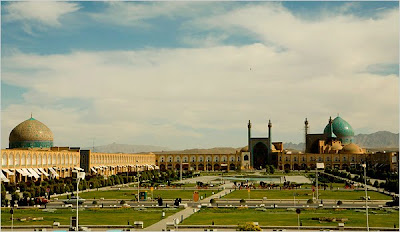
The Bangkok Metropolitan Area is home to two capitals of Thailand: the area historically known as Rattanakosin, and the modern Bangkok. There are a large number of palaces in Bangkok. Several are still in use by the Thai royal family, while others are now open to the public and some have become government buildings or universities.
The king's official residence is the Grand Palace, which dates to 1782 and has housed Thailand's monarchs for over 150 years. Up to the early 20th century and before the 1932 Revolution, the complex was key in Thai government: it included royal courts, administrative branches, and was similar in layout to that of previous Thai capitals. Within the complex is the Chakri Mahaprasat Hall and Wat Phra Kaew, which houses the Emerald Buddha and is considered the most important temple in Thailand. Chitralada Palace is the Bangkok residence of King Bhumibol Adulyadej (Rama IX) and Queen Sirikit.
Of the hundreds of wats located in Bangkok, only a few are notable. When King Taksin led his troops out of Ayutthaya and into Thon Buri, they took refuge in Wat Arun. This pre-Thon Buri era structure rises to 85 metres (279 ft) and has held the status of tallest structure in Bangkok for longer than any other modern skyscraper[citation needed].
Wat Pho, which houses the Temple of the Reclining Buddha or Wat Phra Chetuphon, is located behind the Temple of the Emerald Buddha in the Grand Palace. It is the largest temple in Bangkok and named for its huge reclining Buddha measuring 46 metres (151 ft) long and covered in gold leaf. The Buddha's feet alone are 3 metres (10 ft) long.
Wat Suthat is one of the oldest temples and the site of the original Giant Swing. A huge teak arch, all that remains of the original swing, stands on the grounds in front of the temple. The swing was used in a ceremony to give thanks for a good rice harvest.
Within Wat Saket is the Golden Mount, or Phu Khao Thong, an unusual temple that houses Buddha relics within its 58-metre-high chedi surmounted by a golden cupola. Built by King Rama I just outside the new city walls, the late-18th century temple served as the capital's crematorium. During the next hundred years, the temple became a dumping ground for some 60,000 plague victims.[citation needed]
The king's official residence is the Grand Palace, which dates to 1782 and has housed Thailand's monarchs for over 150 years. Up to the early 20th century and before the 1932 Revolution, the complex was key in Thai government: it included royal courts, administrative branches, and was similar in layout to that of previous Thai capitals. Within the complex is the Chakri Mahaprasat Hall and Wat Phra Kaew, which houses the Emerald Buddha and is considered the most important temple in Thailand. Chitralada Palace is the Bangkok residence of King Bhumibol Adulyadej (Rama IX) and Queen Sirikit.
Of the hundreds of wats located in Bangkok, only a few are notable. When King Taksin led his troops out of Ayutthaya and into Thon Buri, they took refuge in Wat Arun. This pre-Thon Buri era structure rises to 85 metres (279 ft) and has held the status of tallest structure in Bangkok for longer than any other modern skyscraper[citation needed].
Wat Pho, which houses the Temple of the Reclining Buddha or Wat Phra Chetuphon, is located behind the Temple of the Emerald Buddha in the Grand Palace. It is the largest temple in Bangkok and named for its huge reclining Buddha measuring 46 metres (151 ft) long and covered in gold leaf. The Buddha's feet alone are 3 metres (10 ft) long.
Wat Suthat is one of the oldest temples and the site of the original Giant Swing. A huge teak arch, all that remains of the original swing, stands on the grounds in front of the temple. The swing was used in a ceremony to give thanks for a good rice harvest.
Within Wat Saket is the Golden Mount, or Phu Khao Thong, an unusual temple that houses Buddha relics within its 58-metre-high chedi surmounted by a golden cupola. Built by King Rama I just outside the new city walls, the late-18th century temple served as the capital's crematorium. During the next hundred years, the temple became a dumping ground for some 60,000 plague victims.[citation needed]






















